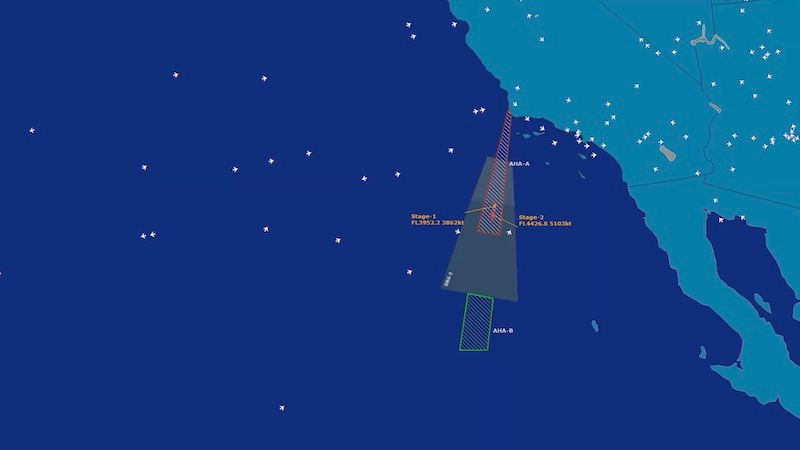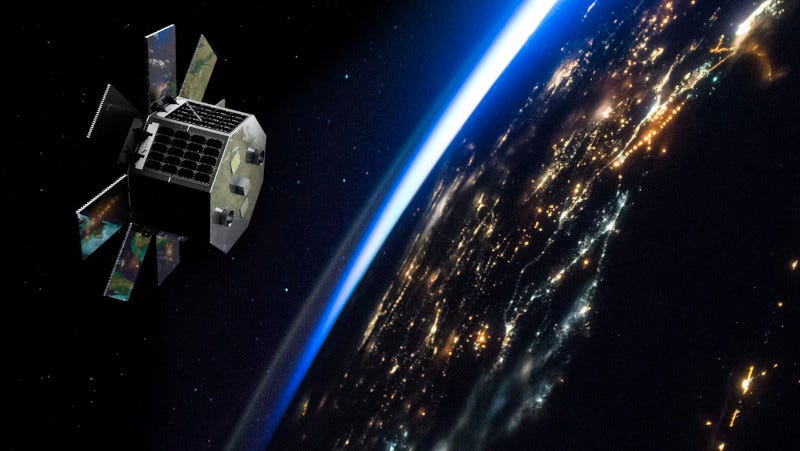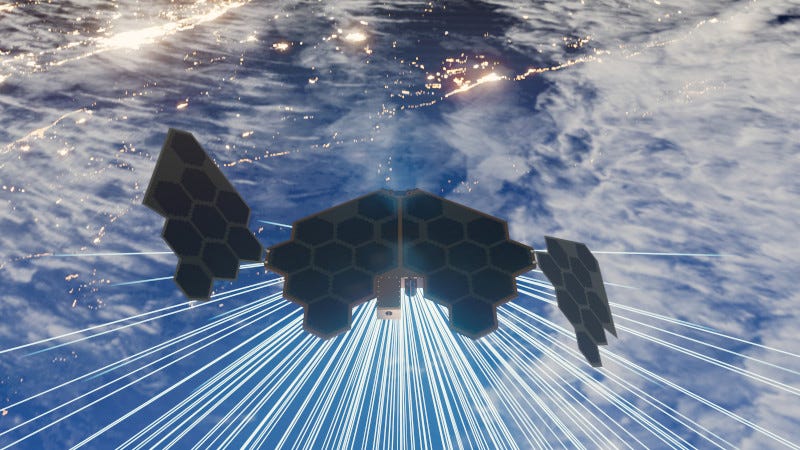U.S. Transportation Secretary and Acting NASA Administrator Sean P. Duffy recently marked the FAA’s 1,000th operation of a commercial space vehicle that the agency licensed or permitted.
As the number of launches and reentries continues to grow, particularly with the signing last week of the “Enabling Competition in the Commercial Space Industry” Executive Order, the FAA is moving forward with actions to maintain public safety while reducing regulatory burden to meet increasing industry demand.
Timely license approval by the FAA is key to getting U.S. rockets off the launch pad and into space. The FAA is implementing the Part 450 license rule to streamline the launch and reentry application process, authorize multiple operations with one license approval, and relieve administrative and cost burdens on industry, among other benefits. Seven operators have a Part 450 license with several others in the process.
Secretary Duffy said the FAA is dedicated to providing safe, efficient, and timely access to space.
-0-
Meanwhile, the agency has introduced the first of several new capabilities being developed to further the safe integration of launch and reentry vehicles into the National Airspace System (NAS). Space Data Integrator is an operational prototype that will receive and distribute launch and reentry data for initial use within the NAS to enable improved situational awareness and airspace management decision-making.
SDI will provide some much-needed automation to improve the current operation, which relies heavily on manual processes to retrieve and communicate space data.
The SDI operational prototype is designed to accept launch and reentry vehicle state vector data gathered from operators such as vehicle position, altitude, and speed. It will then process the data, display it, and distribute it to Traffic Flow Management System (TFMS). The system allows the FAA to track the actual versus planned trajectory of launch and reentry operations, the status of various mission events, and the display of Aircraft Hazard Areas (AHAs).
The end goal is to optimize the safety, efficiency, and integration of space operations using our advanced automation tools and procedural improvements, the agency says.
-0-
Space and defense technology company Sidus Space posted higher revenue but deeper losses in the second quarter as it invests in next-generation satellite systems and artificial intelligence capabilities.
The company completed commissioning of its ADCS system on LizzieSat-3 with autonomous, machine learning-powered onboard guidance, navigation and control software. The company also deployed its Orlaith AI system in Asia and amended its lunar satellite manufacturing contract with Lonestar Holdings, bringing the total potential value to $120 million.
On an earnings call recorded and posted to the Sidus Space website, CEO Carol Craig said that the deployment of LizzieSat 3 helped lay the groundwork for future revenue enhancement.
"We completed commissioning of the ADCS system on LizzieSat 3 with cutting-edge, autonomous machine learning onboard GNC software to enable full autonomous pointing, and set the stage for solar array deployment and payload activation. This demonstrates the ability of our satellites to accept technological software advancements while on-orbit," Craig said. "It also represents a major step towards converting our satellite infrastructure into recurring, revenue-generating assets. We are now moving to activate our sensors, which will lead to subscriptions under existing customer agreements. The activation of these technologies will also support additional government and commercial contracts where on-orbit experience and performance are also key differentiators."
Chief Financial Officer Adarsh Perekh dove deeper into the actual numbers.
"Total revenue for the first half of 2025 was approximately $1.5 million, compared to $2.0 million in the same period in 2024. While this reflects a decrease of $478,000, or 24 percent, the change aligns with our shift away from legacy contract work toward higher-value space-based and AI driven solutions. This repositioning is intentional, and expect to generate more sustainable recurring revenue in future periods. The impact of milestone-based revenue recognition also influence the year-over-year comparison," Perekh said. "Cost of revenue rose to approximately $4.2 million, a 52 percent increase from $2.7 million in the first half of 2024. Key contributors included a $1.1 million increase in depreciation tied to satellite and software investments; a changing contract mix requiring greater labor and material inputs; ongoing supply chain pressures impacting manufacturing operations. Gross profits for the period was a loss of $2.7 million, compared to a loss of $757,000 in the same period last year."
We see Sidus Space's results reflecting a broader trend in the commercial space industry, where companies are investing heavily in next-generation capabilities while working to commercialize their technologies.
-0-
Why not take a minute to become a paid subscriber to The Journal of Space Commerce. Whether you’re a space professional, investor or an enthusiast, paid subscribers have first access to premium articles and podcasts focused on the new space economy. Just click the subscribe button below, and help keep The Journal of Space Commerce independent as we chronicle, cajole and, when necessary, critique the commercial space industry.
-0-
New market research from MarketsandMarkets indicates the global satellite internet market has the potential to surge from $14.56 billion this year to as much as $33.44 billion by 2030, driven by widespread adoption of affordable user terminals and artificial intelligence-powered network optimization systems.
The market is expected to register an 18.1% compound annual growth rate during the forecast period, propelled by electronically steerable user terminals that reduce adoption barriers across consumer and enterprise segments. AI-powered network management systems are improving bandwidth efficiency by dynamically prioritizing traffic based on application and region, allowing providers to serve more users with fewer resources.
Multi-orbit systems are projected to register the highest growth as they combine advantages of low Earth orbit, medium Earth orbit and geostationary Earth orbit satellites. SpaceX, Viasat, EchoStar Corporation, Eutelsat Communications SA and SES S.A. dominate the competitive landscape as leading market players, the analyst says.
-0-
SpinLaunch, a company that was founded to create an innovative way to launch small satellites into orbit, is pivoting to be a manufacturer and operator of those small satellites.
The company developed a ground-based centrifuge that would launch small payloads into orbit, and while they had some success with suborbital missions, getting all the way to LEO proved to be a more daunting challenge. While they have not given up on the idea entirely, the company recently secured $30 million in funding to speed development of its low-earth orbit satellite broadband network. The Meridian Space constellation aims to provide cost-effective global satellite communications.
SpinLaunch has completed full-scale testing of its proprietary multi-band reflectarray antenna, a key component that enables the constellation's low-cost design. The company says its reconfigurable antenna offers a more compact and energy-efficient alternative to traditional satellite antennas, which can be bulky and expensive.
The pivot comes after changes in the C-Suite. In 2024, David Wrenn was named as CEO, succeeding company founder and CEO Jonathan Yaney. Recently, Wrenn was replaced as CEO by SatComm industry veteran Massimiliano Ladovaz, who is known as a prolific fundraiser.
SpinLaunch appears to be continuing to develop its centrifugal launch system, perhaps to keep control of the deployment of its satellite constellation.
-0-
On this most recent edition of The Journal of Space Commerce podcast, I talked with Michael Potter, one of the founding trustees of the Lunar Museum of Art. LUMA is a digital museum and archival initiative focused on the intersection of art, space, and technology. It presents curated exhibitions, immersive galleries, and projects that explore humanity’s cultural expansion beyond Earth. LUMA is also a leader in integrating NFTs and digital storytelling into space-themed experiences.
On the podcast, Potter explained that LUMA is a digital layer on top of the Lonestar Data Holdings data center, which was carried to the moon aboard the Intuitive Machines lunar lander.
"From a practical point of view, we're the first museum on the moon, we're the first non-profit museum on the moon (and) the first art museum on the moon," Potter said. "But to get a start, we had to do it in a digital context because that was all that was available to us at that moment. But the idea is that this is really a hybrid museum."
LUMA currently has four galleries:
The Best of NASA
Space for Art: Healing Through Creativity
Cinema
Next Frontiers
Potter hopes that LUMA will eventually become part of an envisioned network called "The Museums of the Next Frontiers" with other art museums.
-0-
And those are some of the top stories we covered for you on The Journal of Space Commerce this week. Space Commerce Week is a production of Ex Terra Media. You can get daily updates on space commerce by subscribing to The Journal of Space Commerce on Substack at www.exterrajsc.com. And please consider becoming a paid subscriber. Whether you’re a space professional, investor or an enthusiast, paid subscribers have first access to premium articles and podcasts focused on the new space economy. Just visit www.exterrajsc.com and help keep The Journal of Space Commerce independent as we chronicle, cajole and, when necessary, critique the commercial space industry.
Theme Stock Music provided by CoolTones, from Pond5


















